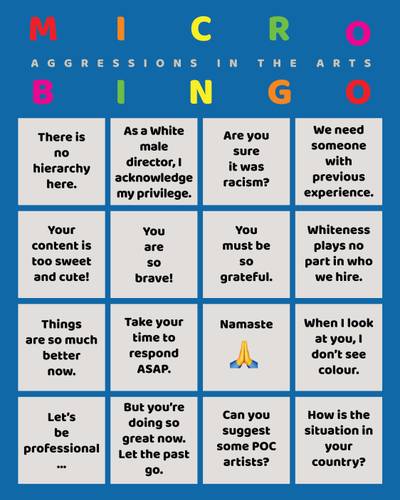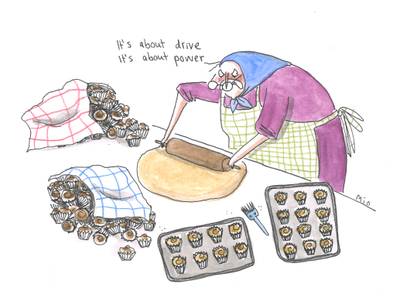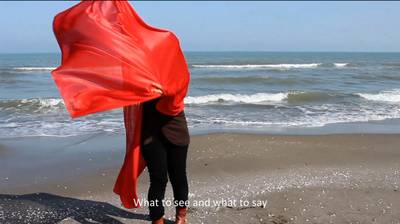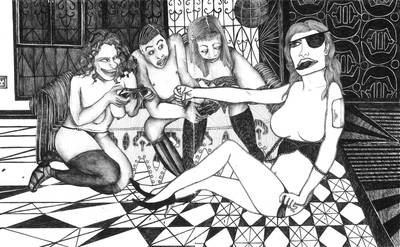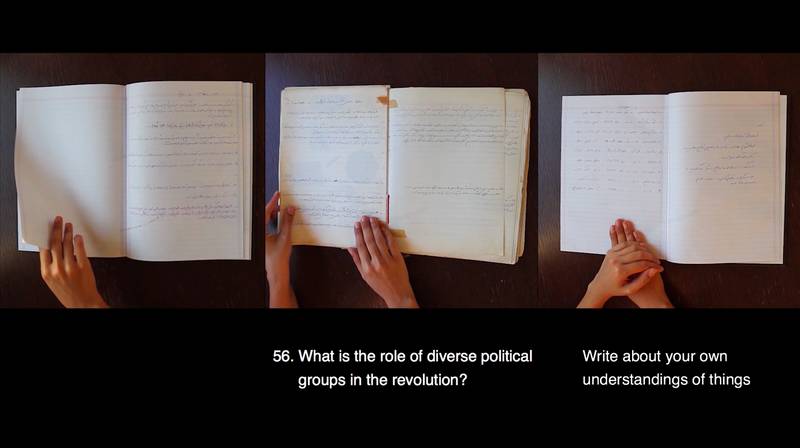

Film still from Elham Rahmati’s work ‘Holding a Monument’, 2018
Elham Rahmati (b. 1989, Tehran) is a visual artist and curator based in Helsinki. She is the co-founder and co-editor of NO NIIN. In 2019 and 2020, she worked as the curator and producer of the Academy of Moving People & Images (AMPI), a film school in Helsinki for mobile people.
Vidha Saumya (b. 1984, Patna) is a Helsinki-based artist-poet. She is the co-founder and co-editor of NO NIIN – an online monthly magazine in Finland, and a founding member of the Museum of Impossible Forms – an award-winning cultural para-institution in Kontula, Finland.
I promise I won’t get all political
Elham Rahmati
Do you remember this meme where ‘me’ says, ‘I promise I won’t get all political’, cut to ‘three drinks later’ where ‘me’ is Lenin hyping up the masses with a revolutionary speech? This used to align perfectly with my self-image in my 20s. Now, not so much. And, let me try to tell you why.
Many people of my generation in Iran are children of parents who have not only seen the 1979 revolution but have participated in it in one way or another, although these days, they keep looking for ways to minimise their roles in it or pretend they had no part in that “disaster” whatsoever. I did an artistic project called Holding a Monument a few years ago. The work was based on my mother’s notebook, made in 1979, in which she, together with her sister, wrote questions asking one’s thoughts on subjects such as the idea of political Islam; social inequality; hijab; colonialism; political independence; their role in the revolution; martyrdom; the role of universities and different institutions, etc. My mother and aunt responded to the questions and then passed the notebook to their friends to write down their responses. I used this notebook as a blueprint for making two other notebooks with the same inquiries. I gave one to my friends who were born after the revolution. The other one went to the same people who wrote in the original notebook, those who had taken to the streets with revolutionary values: asking for equality, independence from the West, standing up for the rights of the working class, etc., all of which have been put to the test in the course of the last 40 years. Their answers to the book’s inquiries were apologetic, filled with guilt and regret, and “this is not how we wanted things to turn out.” They ask for sympathy, which I don’t have much for them. You see, I think of their generation as a highly arrogant one. It’s not that they didn’t “get it” back then and made a mistake. The problem is that they still don’t “get it”, that understanding without which all social movements are doomed to fail. I’m referring to our flawed idea of “freedom” as something that is limited to our own views only. Whereas we truly believe in freedom when we want it for our adversaries as well. I asked my mother recently whether she joined in with other women in the protests against the hijab law when it was introduced shortly after the revolution. She said no. Why? Because she adopted the hijab voluntarily and didn’t see the problematics of others being obliged to do so.
There are protests happening right now in Iran against the obligatory hijab law, sparked by the tragic death of Mahsa (Zhina) Amini, a 22-year-old Kurdish girl, at the hands of the morality police in Tehran. People are chanting “زن، زندگی، آزادی” which translates to “woman, life, freedom”. A beautiful and apt slogan reminding us that women’s liberation is not a secondary task and that demands for freedom are meaningless without it. I’m wondering how many pro-hijab people are going to join the protests. I dream of millions.
As I’m writing this editorial, I can’t think about anything other than Mahsa (Zhina) Amini and what is taking place in the streets of Iran. Vidha assures me, “When reading an editorial, I am not reading you as you now, but you as a composite of your experiences, your politicality, and your views that are constantly updating and revising.” With this reading, I hope you will forgive my scattered thoughts.
I used to religiously follow Iranian politics and participate in the social media debates around it, especially because I left to study abroad since 2013 and didn’t want to become one of those diaspora people with zombie politics (like the “respectable” filmmaker with Iranian origins I met in Helsinki once who told me, “the solution to all Iran’s problems are in the US dropping a nuke on it, as it is only then that Iranians can start with a clean slate and rebuild things correctly, you know, as Japan did.” I asked him if he had any friends or family in Iran. To which he answered, “No”). It was important to me to preserve ‘hope’ within myself, no matter what. To keep thinking with others and not give up on change. That hope has grown dimmer and dimmer in the past few years, thanks to unfettered internal political and economic corruption and the Western sanctions exacerbating it. I stopped following the news and commenting on debates and gave myself a break.
How can one preserve hope when the problems are colossal, and the institutions in power you’re fighting against are so forceful? In these circumstances, a lot of blame is thrown around to figure out what/who is responsible for this ugly state of affairs. One particular blame is one that scolds people for being ‘passive’ in the face of oppression, aiming to create an overbearing amount of guilt that may shame them into becoming ‘active’ agents. I don’t buy into this humiliating narrative that implies ‘we’ as people have always been afraid, indifferent, or submissive towards oppression, so we ‘deserve’ to live like this. I think what we have been in recent years, at least, is not ‘passive’ but ‘desperate’. The difference here is that ‘passive’ people have surrendered to oppression, whereas ‘desperate’ people have not. They are merely in a state of recuperation, taking their time to figure out what to do, which is what you need to do because you have things to lose, you have a life that is full of values, and one can never be too careless with safeguarding that. Spending some time in this lingering state of ‘desperation’ encourages you to be more patient, and to trust that things are cooking on some level unseen to you, to learn you are not the center of the universe and the demand for liberation hasn’t started with you and will not end with you. If you just look closely enough you’ll see an abundance of torches being passed around, from one generation to another, from one movement to the next.
I am as passionate as I was ten years ago about notions of resistance and change, but it takes me more than three drinks to get on a podium and raise my imaginary revolutionary flag. I’m more eager to sit amongst the ‘desperate’ crowd and listen to what they have to say, about their stubborn histories of resistance and their dreams and imaginaries of the future. If I’m lucky enough, I might be able to contribute something to that image, if not, I’ll feel joyous for just having been there. My tip for others who wish similarly is to find a space to sit next to women. When the time for movement comes, women will be on the first row, leading, hopefully, not just themselves and everyone who looks like them and thinks like them, but everyone, adversaries and whatnot. Isn’t that an image worth getting all political for?
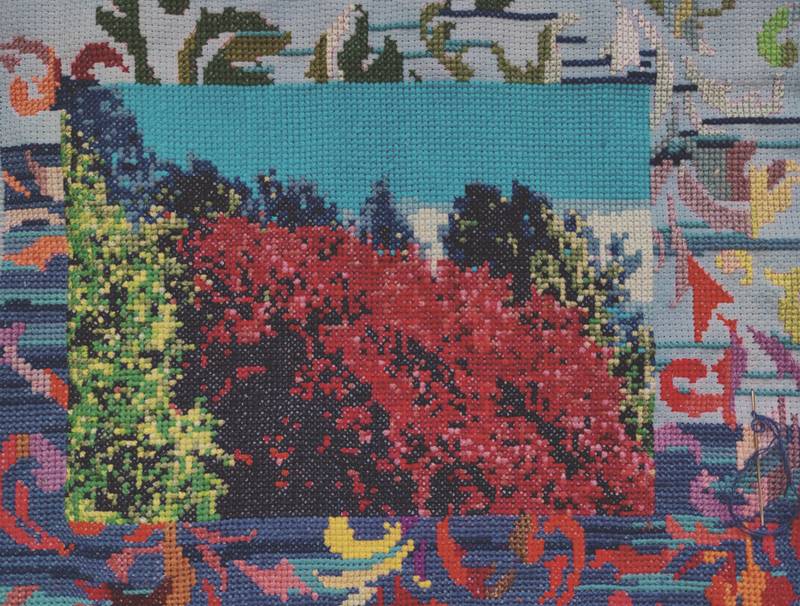

What is the metaphor of the tree?
In the garden, at the jungle, or as a houseplant?
Vidha Saumya
Among the eight to ten houseplants that have survived the past six years in my Helsinki home, the oldest is a Reunustraakkipuu (Dragon Tree) passed on to me by my ViCCA classmate and friend N while leaving Finland, who got it handed down from P, who left Finland earlier. The youngest is a Palmuvehka (Emerald Palm), gifted by D with a note, “It’s impossible to kill this plant” (D is fully aware of my lack of hydrating tendencies for both the plants and me).
When buying plants for the NO NIIN office, E and I beelined for Palmuvehka, chorusing, “It’s impossible to kill this plant.” Also known as ‘Eternity Plant’, it stores water like a camel. Even in a drought, its roots keep pumping the stored water to keep the leaves glossy. We also purchased Pilea and Kultaköynnös, the easiest to maintain in an office setup. But even easy-to-keep plants – the fittest and the most adaptive – need more than basic gestures of care.
Plants are an easy metaphor for understanding real-world methods for day-to-day care and creating pre-existing conditions for care to take effect. They need suitable soil, adequate sun, a healthy supply of water and nutrients, but also intangibles, such as attention, hospitality and reciprocity. Plant parents know that one must attend to them closely, and be accommodating to their whims.
One of the ways that care work manifests is the creating and sustaining of communities. When you are all outsiders in a strange city, looking out for each other is the route to community-building. As individuals, we reach out or are reached out to on the basis of familial and familiar conditions/connections, whether through identity, allyship, common political outlooks, and most easily through a background of common languages or nationality. Sometimes communities are formed simply by the happenstance of sharing a common location of study, work, commute or residency. Communities are complex structures, and any simplistic understanding reduces their agency, their capability to simultaneously blossom into other things – often messier than desired, but necessary and rewarding nonetheless. Successful communities change the scene. New communities can produce change because they were dynamically changing even before they were recognised and lumped together under the labels of ‘immigrants’, ‘foreigners’, ‘aliens’, ‘minorities’, and/or ‘marginalized’. Such disenfranchising umbrella terms are only convenient holding patterns for a community – neither its origin nor its meaning.
Conditions in which new communities bring change are rarely acknowledged. Not that these changes are hard to notice. Often, the contribution by such communities is conveniently and notoriously ignored, kept from joining the ‘mainstream’, documented as “alternative” projects, and their work appropriated. The involvement of institutions and influential organisations comes across as nothing more than charity work because they do not anticipate the liveliness and the lasting effects of the processes these communities put into motion. Their contributions are tamed, oversimplified, boxed in and occasionally celebrated by giving out crumbs of accolades to a cherry-picking of individuals from the community, assuming they represent it.
In a recent dream, I was standing with my mother and grandfather (Baba) at the fourth-floor landing of our apartment building in Mumbai. These days, from the landing, one can see mangrove forests, then a creek, followed by houses covered in tarpaulin. But in the dream, the houses had been cleared up, and the land had been tilled for planting. Trees of all kinds were brought via tractors, helicopters and cranes, and a large team of uniformed people were planting these big grown-up trees. As we watched the planting, fascinated, I heard Baba’s voice saying, “Why are they planting Babool next to Ashok? Look at these fools, planting Bargad next to Litchi.” Turning to him irritably, I say, “Can’t you see at least they’re being planted? They’ll grow roots, and they’ll all be fine.” Baba replied patiently, “There is not enough space for roots to grow, small or big; they’re all being planted at equal distances, the roots will rub against each other, and their branches will fight.” I scoff, “But that’s the rule of the jungle, isn’t it? Strongest wins.” Ma says, “We can keep imagining all we want, that these trees being brought here will take root; we can marvel at their resilience and how they adapt. But if the soil has no meaning to the trees, they will never talk, even if they each do their duty”.
As I understand, my dream outlines two extreme possibilities of fully grown outsiders taking root in foreign soils – one is that these outsiders will all be fine no matter how limiting or mechanical the form of care being bestowed upon them. They’ll make do with their daily resilience protein shake and the occasional “You’re so brave!” messages from their more privileged neighbours – and things will take their ‘own due course’. The other possibility is that it will all lead to death, decay, doom and peril. Forget a ‘community’ of outsiders, even ‘individual’ outsiders will have difficulty thriving, their roots always rubbing each other in the wrong way – bringing in more and more strife to their apportioned and allotted existence.
But there is a third way – not the survival of the ‘fittest’ or the most ‘servile/adaptive’ but the survival of the most responsive – the most responsive towards building a community which is not a trimmed garden of look-alikes – but a verdant forest of change, transformation and unforeseen possibilities in fourth, fifth, sixth, multiple ways. A responsive community is characterized by efforts that embrace difficult and principled positions they know to be the right one, and decide to take it forward at the risk and unpopular position of appearing too political, or seeming controversial. They not only refute an amicable balance, objectivity and moderation but they also reject easy validation, generic compliments that could possibly give them dotted placement on institutional mantles in the so called “democratic” mainstream.
This is not an easy view to have and maintain in a world where any news from outside the white hemisphere of the US, UK and EU elicits an “It’s their problem, not mine” or “This is not my space, what can I say”; most of the time people aren’t even aware of what’s happening simultaneously to the British grandmother dying. And why even go so far, even locally, how many institutions, organisations or even individuals are aware of the complexity of what it means to live and work as a non-white foreigner? When will we step out of our hyperlocal mentality and acknowledge the interconnectedness of our struggles? Isn’t it high time we begin familiarising ourselves with the nuances of the ongoing struggles and resistance outside our personal and geographical locations? Caring for a plant is not just about watering it. There is more.
A Kultaköynnös vine is usually hoisted up, expecting the leaves to grow down, beautifying the space like an upside-down chandelier. Its leaves grow larger as it is supported to climb higher. Communities too trespass linguistic and cultural boundaries and thrive with adequate and accurate support. There is always more to explore, like an adamant vine that’s indulgently cared for. There is more to them than what has been recorded in the contemporary world of trends and keywords, and there will be more. Things will be messier and better. There will be change. A plant taking over the whole forest.
